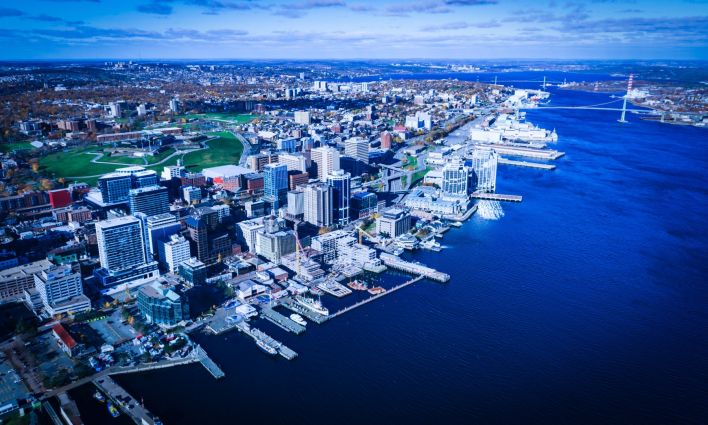Statistics Canada released new data yesterday on high income trends in Canada with nary a mention of the Atlantic Provinces. From a Canadian comparative perspective, the data told a story that was more striking for most of the rest of the country and in particular, Alberta, Ontario, BC and Quebec where 92% of the top 1% of tax filers are found, with only 3.4% in Atlantic Canada.
The inequality that exists in Atlantic Canada also tells a story that demands illustration.
These data reveal that the Atlantic Provinces are all significantly less equal today than they were in 1982. The trends are troubling, but not surprising.
Are there things that we can be proud of in Atlantic Canada? Sort of. It is true that Atlantic Canada is less unequal than the rest of Canada (meaning the gap between what the 1% receives versus the 90% is the smallest). Moreover, Prince Edward Island has seen the smallest increase in the country of the ratio of the top 1% to the bottom 90% of Islanders. It is also true that the bottom 90% in two Atlantic Provinces had the greatest gains in the federation; In both Newfoundland and PEI, the bottom 90% saw an increase in income of 29% between 1982 and 2010. It is also true that the increases in income for the top 1% for Nova Scotia and New Brunswick, 33% and 38% respectively, were some of the smallest increases for the top 1% in the country.
But, let's not be too complacent. PEI might have the smallest gap increase, but the average income of the top 1% is still 8 times that of the bottom 90% of Islanders --the ratio was 7.6 times in 1982. Nova Scotia and New Brunswick saw modest income gains of 16% and 19% respectively for the bottom 90% of tax filers, while the top 1% in each province enjoyed an increase about twice as much. We are not without extreme inequality either.
In Nova Scotia, the bottom 90% of Haligonians have seen a real income increase of only $3,500 since 1982. The top 1% of tax filers in that city saw their incomes rise by an average of $99,500 over the same period. In 1982, the average tax filer in the top 1% received 8.3 times as much as their bottom 90% counterpart. Now, the 1% tax filer makes about 10.5 times as much, similar to the rest of the province.
Other Atlantic Canadian cities have followed suit. Over this period, the average St. John's (Newfoundland and Labrador) tax filer in the top 1% saw their income increase by 60%, while their counterpart in the bottom 90% only received an increase just over one-third the size at 23%. Similarly, the 15% earnings-increase enjoyed by the average bottom 90% of Saint John, New Brunswick's tax filers is dwarfed by the average top 1% increase of 72%; that’s almost five times greater! Saint John's top 1% tax filers have an average income that is 12 times higher than the 90%.
Clearly the top 1% of tax filers in Atlantic Canada has made massive strides in income, leaving the average Atlantic Canadian earner behind. For instance, in 1982, the average income of the top 1% in Newfoundland and Labrador was 8 times the bottom 90% average. Now, that number is closer to 10 times. That means that in just 30 years, Newfoundland and Labrador’s top earners have increased their real incomes by two entire extra average incomes. Assuming you’re an average bottom 90% earner, consider how your family’s quality of life would change if your income were tripled.
Part of the story emphasized by Statistics Canada was that women made significant gains across the country. In Atlantic Canada, women now make up 20% of the top 1% of tax filers versus 9% in 1982.
Is this really a good news story? Not exactly. While it is certainly positive that women are being afforded the opportunity to occupy the ranks of the wealthy, this does not mitigate the deleterious effects of inequality. Women in the top 1%, like the men in that group, benefit from an economic system that has clear gender biases. Whether or not a CEO is a woman, the low-wage workers she employs will still predominantly be women, thus ultimately reinforcing the gender wage-gap. In 2010, the average earnings of women in Atlantic Canada were 73% of men's earnings (for full-time full-year workers).
Concentrating power in the hands of a few, whether those hands belong to men or women, has a negative impact on our democracy and our society as a whole. Economic resources bestow power on those who have control over them, and impose despair on those who don’t.
To be in the 1% in Atlantic Canada you need to have an income of at least $151,900 with an average income of $259,300. The average income of the bottom 90% of tax filers in contrast is $26,700. The average income of the bottom 50% is $13,600 and accounted for 19% of region's total income. The 1% accounts for 7% of the region's total income.
Such egregious income inequality is bad for all Atlantic Canadians. Oxfam's recent report on inequality summarizes its many negative facets; It is economically inefficient, politically corrosive, socially divisive, environmentally destructive, unethical and unnecessary. Oxfam even noted that it has become a mainstream economic issue: “the World Economic Forum’s Global Risk Report rated inequality as one of the top global risks of 2013. The IMF and the Economist agree.” Inequality has been recognized as a problem the world over.
Further, research links economic inequality to negative social indicators. There are marked correlations between inequality and such phenomena as mental illness, life expectancy, drug use, obesity, teenage pregnancy, high school dropout rates, violent crime, youth crime, and imprisonment rates.
That means we should all pay attention to inequalities. Income inequality is closely linked to gender, race and other power imbalances, and it has increased while taxation has become less fair, social programs have been neglected and the power of organized labour has eroded.
A significant amount of research has considered what makes other societies more equal.
Those societies that are the most equal have higher rates of unionization. Unions not only build the middle class by promoting good-paying, stable jobs. They also advocate for pro-worker policies for the non-unionized, like minimum wages, health and safety standards and employees’ rights.
The more equal societies also have a range of public services that ensure a better quality of life for everyone. A public and universal, good quality system of early learning and child care is one example of a significant gap across Atlantic Canada.
The story told by StatsCan’s recent inequality data is not a good one. It is a story of public policy being twisted to support the interests of a wealthy minority. It is a story of the rich not contributing their fair share, of important public programs being dissolved and of the hard-working families that contribute so much being valued too little.
The upshot is we have the capacity to change where this story will go next. With the recent Occupy movement, Quebec student strikes and Idle No More, as well as Common Causes, Canadians are clearly showing that an unequal society is not an ideal society. The story of austerity economics is that it exacerbates, not fixes, inequality.
Instead of trying to grow our way to prosperity by incubating the 1%, governments need to make smart decisions that benefit the bottom 90%. We need a progressive tax system, where the wealthiest pay their fair share. With these funds, we can build strong social programs, so everyone is afforded a good quality of life and the opportunity to thrive. We need laws that promote unionization along with strengthened labour standards for all workers. Strong pay equity legislation is required for both the public and private sectors. This is how we curb inequality and change the story of Atlantic Canada to one about mutual prosperity.
Christine Saulnier is Director of CCPA-Nova Scotia. Jason Edwards is a Research Associate with CCPA-Nova Scotia.





